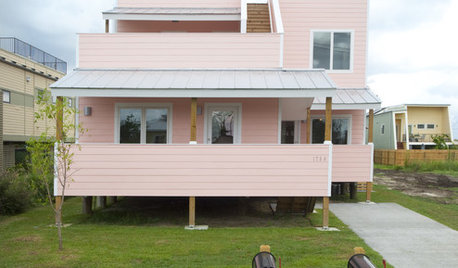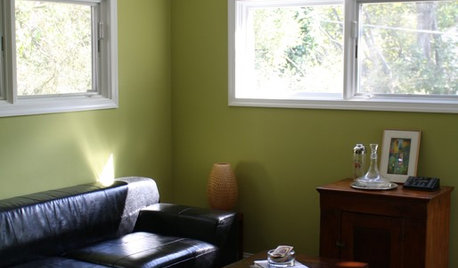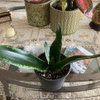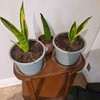Sickly Sansevieria Needs Help!
DizzyGreenGirl_NC
20 years ago
Related Stories

KITCHEN DESIGNDesign Dilemma: My Kitchen Needs Help!
See how you can update a kitchen with new countertops, light fixtures, paint and hardware
Full Story
HOUSEKEEPINGWhen You Need Real Housekeeping Help
Which is scarier, Lifetime's 'Devious Maids' show or that area behind the toilet? If the toilet wins, you'll need these tips
Full Story
ORGANIZING7 Habits to Help a Tidy Closet Stay That Way
Cut the closet clutter for a lifetime — and save money too — by learning how to bring home only clothes you love and need
Full Story
DECLUTTERINGDownsizing Help: How to Edit Your Belongings
Learn what to take and what to toss if you're moving to a smaller home
Full Story
SMALL SPACESDownsizing Help: Where to Put Your Overnight Guests
Lack of space needn’t mean lack of visitors, thanks to sleep sofas, trundle beds and imaginative sleeping options
Full Story
ORGANIZINGDo It for the Kids! A Few Routines Help a Home Run More Smoothly
Not a Naturally Organized person? These tips can help you tackle the onslaught of papers, meals, laundry — and even help you find your keys
Full Story
CONTEMPORARY HOMESFrank Gehry Helps 'Make It Right' in New Orleans
Hurricane Katrina survivors get a colorful, environmentally friendly duplex, courtesy of a starchitect and a star
Full Story
PETSHow to Help Your Dog Be a Good Neighbor
Good fences certainly help, but be sure to introduce your pup to the neighbors and check in from time to time
Full Story
MOST POPULAR9 Real Ways You Can Help After a House Fire
Suggestions from someone who lost her home to fire — and experienced the staggering generosity of community
Full StoryMore Discussions










Cena
marguerite_gw Zone 9a
Related Professionals
Holly Springs Landscape Architects & Landscape Designers · Walnut Landscape Architects & Landscape Designers · Canton Landscape Contractors · Brookfield Landscape Contractors · Broomfield Landscape Contractors · Mahwah Landscape Contractors · Nanuet Landscape Contractors · Soddy Daisy Landscape Contractors · Dallas Window Contractors · Everett Window Contractors · West Chester Window Contractors · Glendale Heights Window Contractors · Montgomery Village Window Contractors · West Springfield Window Contractors · Woodland Hills Window ContractorsDizzyGreenGirl_NCOriginal Author
jon_d
Cena
marguerite_gw Zone 9a
jon_d
Ispahan Zone6a Chicago